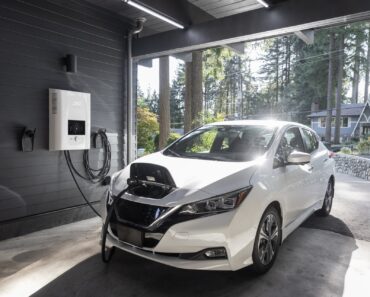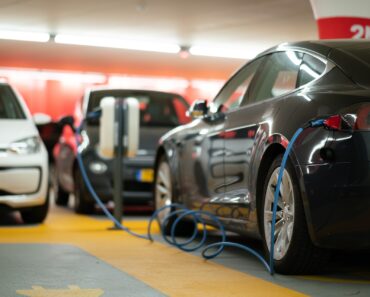Pressing the gas and brake pedals at the same time might seem like an unusual driving maneuver, but it’s something that can happen accidentally or deliberately in certain situations. While it may not be a common practice, understanding what occurs when you press both pedals simultaneously can help you better comprehend your vehicle’s behavior and avoid potential safety hazards. In this article, we’ll explore the mechanics behind pressing the gas and brake at the same time, the effects it can have on different types of vehicles, and the potential risks involved.
Understanding the Basics: Gas and Brake Pedals
The Function of the Gas Pedal
The gas pedal, also known as the accelerator, controls the amount of fuel that is injected into the engine. Pressing the gas pedal increases the engine’s RPM (revolutions per minute), causing the car to accelerate. Essentially, it tells the engine to generate more power, which propels the vehicle forward.
The Function of the Brake Pedal
The brake pedal is responsible for slowing down or stopping the vehicle. When pressed, it engages the braking system, which typically uses hydraulic pressure to apply force to the brake pads or shoes. This force generates friction against the wheels, slowing down the vehicle’s rotation and ultimately bringing it to a halt.
What Happens When Both Pedals Are Pressed?
When both the gas and brake pedals are pressed simultaneously, conflicting signals are sent to the car. The engine is trying to accelerate while the braking system is attempting to slow down or stop the vehicle. The outcome of this action depends on several factors, including the type of vehicle, the driving conditions, and the driver’s intentions.
Effects of Pressing the Gas and Brake at the Same Time
1. Increased Engine Strain and Heat
One immediate effect of pressing both pedals is increased strain on the engine and transmission. The engine is working to produce power, but the brakes are trying to prevent the car from moving. This creates additional stress on both systems.
- Engine Overheating: The engine may overheat due to the increased workload and lack of proper airflow if the vehicle isn’t moving forward.
- Brake Wear and Tear: Applying the brakes while accelerating can cause the brake pads and rotors to wear out more quickly due to the constant friction.
Example:
“Imagine running on a treadmill while someone is trying to hold you back. Both efforts contradict each other, leading to exhaustion and potential damage.”
2. Brake Override Systems in Modern Vehicles
Most modern vehicles are equipped with a brake override system, also known as “Smart Pedal” technology. This safety feature is designed to prioritize braking over acceleration in the event that both pedals are pressed simultaneously.
- How It Works: The system senses when the brake and gas pedals are pressed at the same time. It then overrides the throttle input, reducing engine power and allowing the brakes to take precedence.
- Purpose: This feature is primarily a safety measure to prevent unintended acceleration, which could lead to accidents.
Impact on Driving:
“In vehicles with a brake override system, pressing both pedals will cause the car to decelerate or stop, regardless of how hard you press the gas pedal.”
3. Manual Transmission vs. Automatic Transmission
The effects of pressing the gas and brake pedals simultaneously can differ depending on whether your vehicle has a manual or automatic transmission.
- Manual Transmission: In a manual transmission vehicle, pressing both pedals can cause the engine to rev up while the brakes prevent movement. This can lead to clutch wear if the driver attempts to keep the car stationary while revving the engine.
- Automatic Transmission: In an automatic transmission vehicle, the brake override system will often prevent the car from accelerating, but it can still cause significant strain on the transmission and engine.
Example:
“With a manual transmission, pressing both pedals might feel like trying to hold back a racing horse while standing still. With an automatic, it’s more like the car tries to decide between running and standing.”
4. Intentional Use in Racing and Performance Driving
While pressing both pedals is generally discouraged in regular driving, there are specific scenarios in motorsports and performance driving where this technique, known as “left-foot braking,” is used deliberately.
- Left-Foot Braking: In racing, drivers may use their left foot to apply the brake while their right foot stays on the gas pedal. This allows for more precise control of the car’s weight distribution and helps maintain speed through turns.
- Traction Control: By applying the brakes while accelerating, drivers can shift the car’s weight to improve traction, especially in rear-wheel-drive vehicles.
Example:
“In rally racing, left-foot braking is a common technique used to navigate sharp turns while maintaining speed, demonstrating how controlled use of both pedals can benefit performance.”
Potential Risks of Pressing Both Pedals
1. Increased Risk of Brake Fade
Brake fade is a condition where the braking system loses its effectiveness due to overheating. Pressing both pedals can lead to brake fade, especially if the brakes are applied heavily for an extended period.
- What Happens: The brake pads and rotors become so hot that they can no longer generate enough friction to slow down the vehicle effectively.
- Consequences: Reduced braking performance can lead to longer stopping distances and potentially dangerous situations, especially in emergency braking scenarios.
Example:
“Imagine driving down a steep hill and using the brakes continuously. The heat buildup could lead to a point where pressing the brakes harder doesn’t stop the car effectively.”
2. Unintended Acceleration and Loss of Control
In older vehicles without brake override systems, pressing both pedals could lead to unintended acceleration. If the brakes don’t fully counteract the engine power, the vehicle might continue to move forward or increase speed unexpectedly.
- Loss of Control: This situation can be particularly dangerous if it occurs in traffic or near pedestrians.
- Potential for Accidents: The driver may panic, leading to incorrect reactions such as pressing the gas harder or failing to steer properly.
Example:
“If a driver accidentally presses both pedals at a stoplight and the car lurches forward, it could result in a rear-end collision or, worse, hitting a pedestrian.”
3. Damage to Vehicle Components
Repeatedly pressing both pedals can cause damage to several vehicle components over time, including:
- Brake System: Accelerated wear on brake pads, rotors, and calipers.
- Transmission and Drivetrain: Increased stress on the transmission and drivetrain can lead to premature failure.
- Engine Mounts: Excessive engine movement due to conflicting inputs can wear out engine mounts faster.
Example:
“Think of pressing both pedals as asking your car to go two directions at once—it puts unnecessary strain on all parts involved.”
Tips for Safe Driving Practices
To ensure your safety and maintain the longevity of your vehicle, here are some tips to avoid the pitfalls of pressing both the gas and brake pedals:
1. Drive Mindfully
Always be aware of your foot placement and avoid resting your left foot on the brake pedal while driving.
- Use One Foot for Both Pedals: This reduces the risk of accidentally pressing both pedals simultaneously.
- Check Pedal Placement: Make sure your seat and pedals are adjusted for comfortable, controlled access.
2. Understand Your Vehicle’s Features
Familiarize yourself with your vehicle’s safety features, such as brake override systems and traction control, to understand how your car will respond in different situations.
- Read the Manual: Knowing your car’s capabilities can help prevent unexpected behavior when driving.
- Stay Up to Date: Ensure your vehicle’s software and systems are updated to benefit from the latest safety features.
3. Regular Maintenance
Keep up with regular vehicle maintenance to ensure that all components, especially brakes and the engine, are in good condition.
- Inspect Brakes Regularly: Regularly check brake pads, rotors, and fluid levels to avoid issues like brake fade.
- Monitor Transmission Health: Pay attention to transmission fluid levels and get regular check-ups to ensure smooth operation.
Conclusion
Pressing the gas and brake pedals at the same time can lead to various outcomes, from mild inconvenience to serious safety risks, depending on the vehicle type and the circumstances. While modern vehicles are equipped with safety features that minimize risks, it’s always best to drive cautiously and avoid conflicting inputs to ensure the longevity of your vehicle and the safety of all road users.
Quote:
“Driving is all about control and awareness. Understanding how your vehicle responds to different inputs can keep you safe and your car in great shape.”






